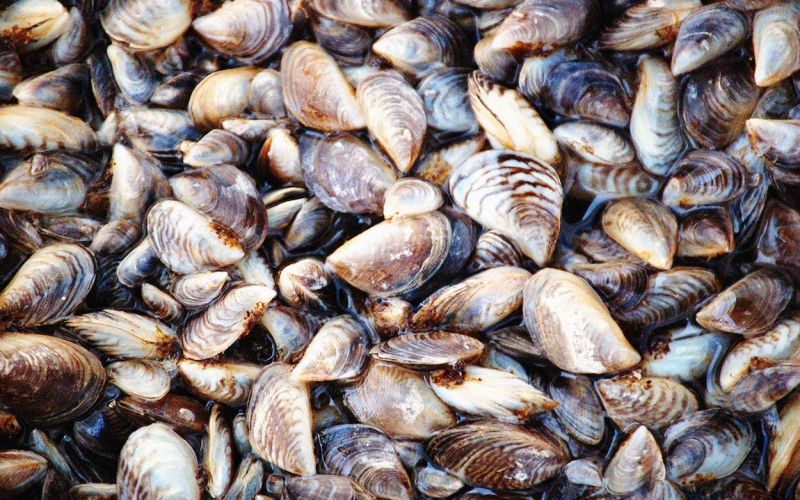Zebra Mussels
Zebra Mussels, small but impactful aquatic creatures, earn their place among common animals starting with the letter "Z." Native to freshwater lakes and rivers in Eastern Europe, these invasive mollusks have spread globally, becoming a significant environmental concern due to their prolific nature and negative impact on ecosystems.
The name "Zebra Mussel" stems from the characteristic dark and light stripes on their shells, resembling the pattern of a zebra. Despite their visually appealing appearance, their introduction into non-native environments has led to a range of ecological issues. Zebra Mussels are efficient filter feeders, consuming plankton and other particles from the water, but their rapid proliferation can disrupt the balance of native ecosystems.
Introduced unintentionally through ballast water from ships, Zebra Mussels have successfully colonized various water bodies around the world. Their ability to reproduce rapidly, with each female capable of producing hundreds of thousands of eggs per year, has contributed to their widespread presence. This prolific reproduction, while impressive in its biological sense, poses a threat to native species by outcompeting them for resources.
One of the significant environmental concerns associated with Zebra Mussels is their impact on water quality. As filter feeders, they can clear large volumes of water, potentially leading to increased sunlight penetration. While this might sound beneficial, it can trigger harmful algal blooms and disrupt the natural balance of underwater ecosystems, affecting both plant and animal life.
The attachment mechanism of Zebra Mussels exacerbates their impact. Using byssal threads, these mollusks attach themselves to hard surfaces such as rocks, docks, and even native mussel shells. This attachment can lead to clogged pipes and infrastructure damage, causing economic challenges for industries relying on water systems.
















